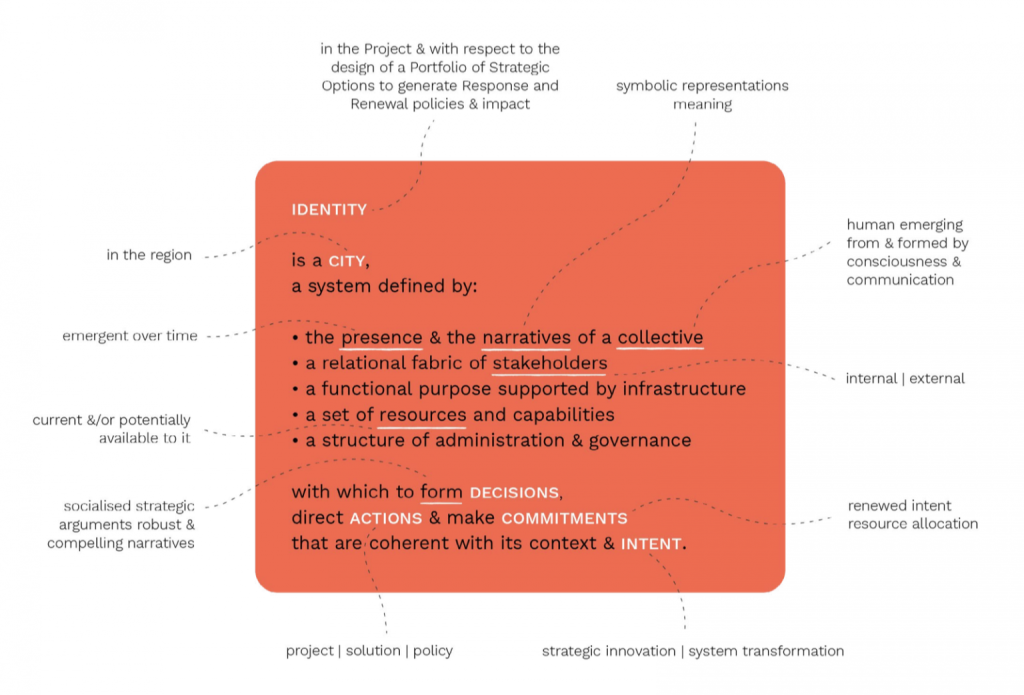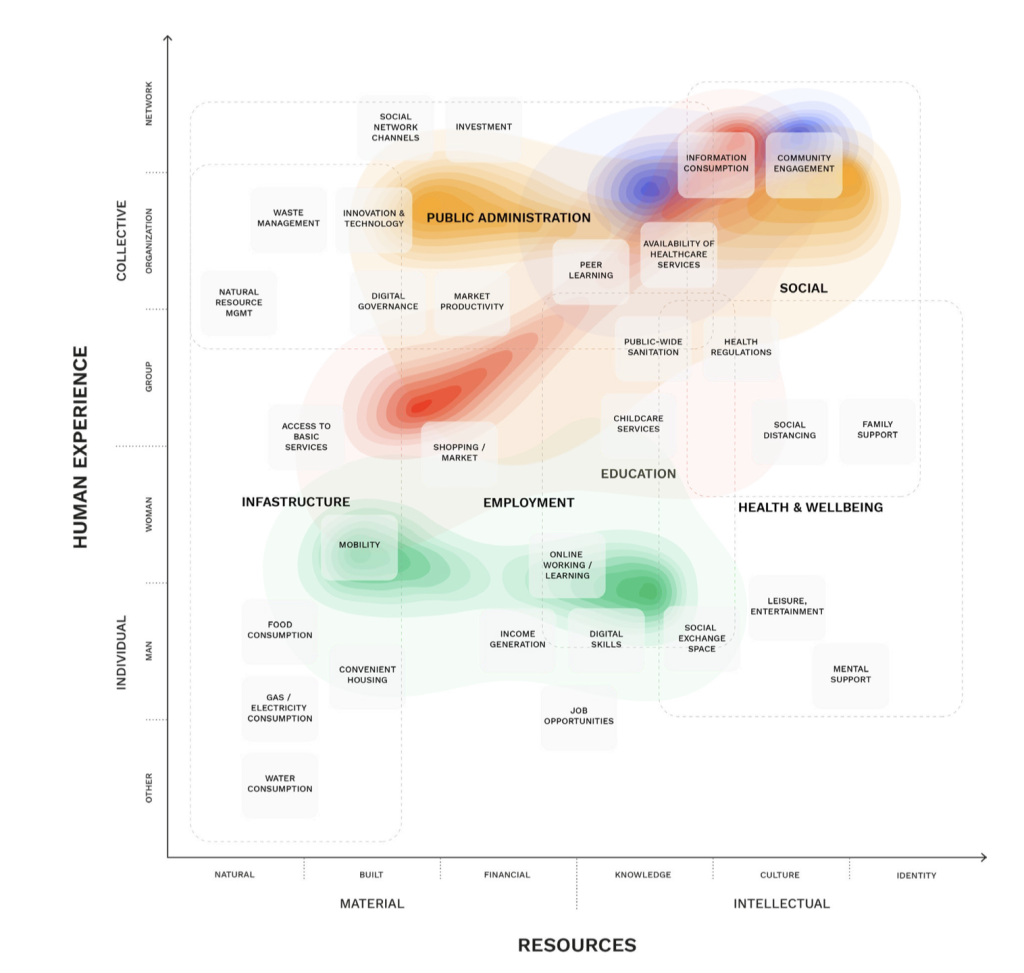How to build an urban transformation portfolio using the systems approach

Written by Yaera Chung and Elina Jarvela
If we are to radically transform urban areas to accelerate changes towards sustainability and resilience, enshrined in the 2030 UN Sustainable Development Goals, where do we start? How do we devise interventions that are not one-off and are capable of addressing the complexity and wickedness of development challenges such as poverty, inequality, or climate change? If we are to bring about systemic change, we need a “portfolio” of solutions, rather than assuming that a single project can lead to the desired impact.
In our previous intro blog on Agorà an urban transformation portfolio framework, we shared why and how our journey in exploring urban systems started with the context of the pandemic. The regional Innovation Team at UNDP RBEC spent over eight months researching, designing, and building a framework, which we are now utilizing to support and guide UNDP Country Offices and regional projects in building systems thinking portfolios for urban transformation. [e.g, TGFF Cities Experiment Fund, EU Mayors for Economic Growth Project, Future of Work portfolio in Uzbekistan, and Digital Transformation portfolio in Kosovo[1]]. This blog will explain the framework’s main building blocks and tools.
As an urban system consists of multi-layered complexities and inter-woven relationships, we apply the social systems theory [2] to understand the urban system through the lens of human society and how we communicate within it and its environment. The framework consists of two main phases: 1) the problem phase: unpacking the complex urban system, and 2) the solution phase: designing and implementing activities part of the urban transformation portfolio to learn how to address identified complex challenges. Each phase has three building blocks and it is critical to view it as a process rather than as separate steps that could be mixed and matched. The importance of applying the framework lies with the value of following the whole process from beginning to end since the learning experience occurs iteratively and consistently over time. The insights and identified discoveries during each phase enrich the designing and thinking process of portfolio development.
Here is the process map for each phase with the building blocks explainer taken from Agorà.

Problem Phase: Unpacking the complex systems
Identity: Within the social systems theory, identity refers to an agent(s) who has the will and capacity to intervene in an identified systemic challenge. In the Agorà framework, we identified the city system as the primary portfolio holder. The city, which has its own will and capacity, has the following features: resources and capabilities to form decisions, a relational fabric of internal and external stakeholders, governance and administrative structures, and willingness to make actions and commitments to its context.

During the problem phase, we aim to understand the identity of the portfolio holder, which includes preliminary research and stakeholder mapping, identifying what distinct capabilities and resources we can bring to the system, and the potential limitations of the portfolio holder.
Object: The object of the urban transformation framework is understanding the landscape of a problem(s) that we want to address and take action to solve with specific intent. In our case, we have identified this to be a city. As the city structure is inter-webbed into a wide range of networks, resources, and functions, we wanted to find our key focus. The process includes carrying out interviews with key stakeholders and actors that we have identified in the system, in an attempt to assess the needs, available resources, enabling conditions, and modes of partnerships. After consolidating the findings from the interviews and our preliminary research, a statement of the object is formed to provide a description of the city.

Intent: An intent is a stated determination to allocate resources and develop actions so that the system engages and has commitment to solve an identified issue. The stated intent for the agora is to design, embed, and dynamically manage a coherent portfolio of strategic innovation options to attract resources, develop policies, model actions and induce system-wide propensities and outcomes:
- Response interventions and solutions that ensure the activation of grounded and distributed resilience mechanisms and social immunity, an additional level of protection that will help communities to be more responsive to various types of shocks, including the pandemic.
- Development of socio-technical systems that generate and give access to renewal capabilities, processes, and tools that will support in creating transformative effects of the identified challenge or a system.

The intent building block includes the synthesis of all the findings and insights on the specific system and the problem area gathered up to this point. It is at this stage that we develop the statement of intent for the portfolio, in coherence with the context. As the intent phase works like a compass that guides us in the direction of what kind of system transformation the portfolio could achieve with regard to the identified problem, it requires multi-stakeholder consultations, validations, and iterations to evolve its direction as the portfolio progresses.

Solution Phase: Design an urban transformation portfolio
City Transformation Canvas: The Agora framework includes a City Transformation Design Canvas, which is an effective and user-friendly conceptual tool with which to engage in the identification of system features and dynamics relevant to the intent.

The Canvas is a 3D system representation that is based on the social systems theory and consists of three main constitutive elements of the social system: human experiences, resources, and decision-forming. It provides a hypothetical model to visualize how a city, as a social system, interacts with resources and feeds its experience into its decision-making processes. It can be used to observe the system’s interactions and dynamics so that particular areas of the city [ex: governance structure, mobility, healthcare, education, etc] can be singled out and used to position options. In addition, the Canvas is a design tool as it stands alone and could be used to foster ideation and innovation workshops, or seed and structure strategic conversations and engagements with partners.
Areas of Interest: The framework includes the identification and description of five key Areas of Interest that would act as system attractors that allow us to focus on where the energy is being concentrated, and guide us in finding leverage points in the system.
In the design of Portfolios of Development Options, an Area of Interest is a heuristic and pragmatic recognition and naming of wherein a social system meaningful experiences are happening in such a way as to be considered “attractors.” These work as a magnet that makes people and resources come together (i.e, when pandemic first broke out, people were finding all possible measures to be safe by social distancing, wearing masts, etc). Their utility, in the process of designing a Portfolio of Options, is that they allow us to observe where the energy in a complex social system is and goes, how much of that energy is available to the system, the mechanisms by which the system directs energy, how and where the system produces information and where intelligence is generated and how it can be leveraged.

The five identified Areas of Interest in the city system are: I-360, Home, Work, I-City, and eSENSE.
- I-360: As a single actor in the city, whether in the form of a citizen, resident, dweller, or visitor, this area focuses on how an individual interacts with the city space including infrastructure, services, etc., in relation to the city.
- Home: As a social unit, which goes beyond physical description but rather focuses on social interactive space at a scale, from family to friends, community, and network, this focuses on how the home interacts with the city space, including where people eat, take shelter, build relationships and engage with others.
- Work: As a functional space where we provide, engage in, and generate economic opportunities and values in the city, this focuses on how existing and emerging models and technologies can be utilized to create more employment opportunities and attract resources.
- I-City: As a collective space for the whole city itself, this focuses on how the city manages itself with the given regulations, frameworks, and resources, and how it interacts within itself and externally.
- eSENSE: As a knowledge repository space for the city, this focuses on how the city collects available data, aggregates information, and engages with different actors to make sense of the city and leads to intelligence creation.
Position Statements: In the process of designing Portfolios of Development Options, Positions are certainly the most critical feature – the principal source of value for a dynamically managed Portfolio of Development Options. A Position identifies and articulates a rationale for “where” an element of the system, that is our object, can be engaged with in order to develop solutions (projects, initiatives, actions, options, programs, policies, etc.) and induce acceleration and transformation effects.

In line with Agora’s intent, the framework provides both response and renewal Positions in each Area of Interest (except in eSENSE) and consists of nine identified Positions. Each Position statement provides “where”, “why” and “how” to build an argument for engaging with the selected system element.
To learn more about how Agorà has been applied in the region, please read this blog on City Experiment Fund, and stay tuned for upcoming blogs on Portfolio Development. If you are interested to learn more about the Agora process, please reach out to us at rbec.innovation@undp.org
[1] References to Kosovo shall be understood to be in the context of Security Council resolution 1244 (1999)
[2] Luhmanns’ social systems theory


